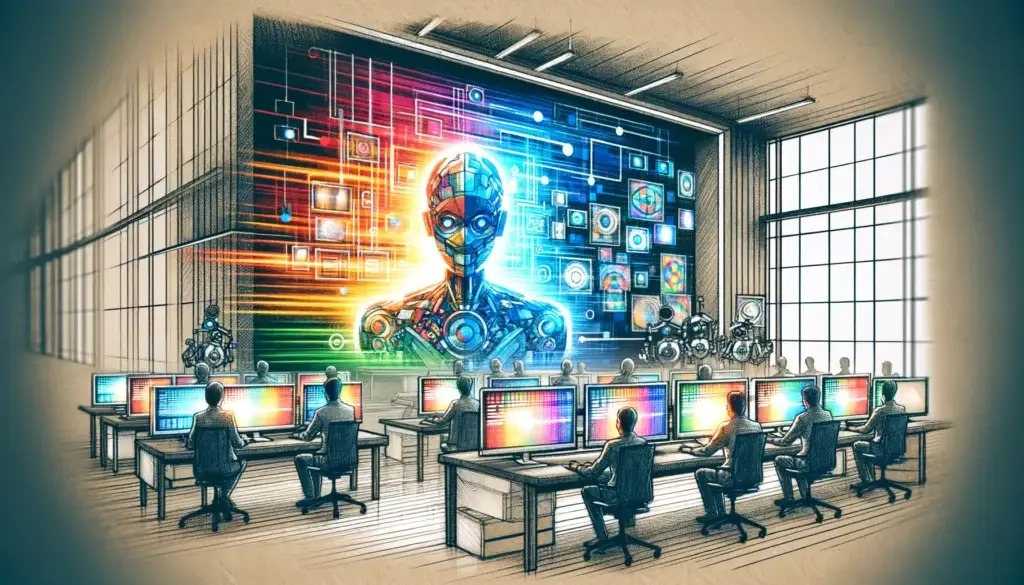The rise of artificial intelligence (AI) has revolutionized countless industries, and visual storytelling is no exception. From creating stunning visual effects (VFX) to enriching narratives with dynamic content, AI is reshaping the way stories are crafted and presented. As the lines between technology and creativity blur, filmmakers, game developers, and visual artists are leveraging AI to push the boundaries of imagination and innovation.
AI in Visual Effects: A New Era of Innovation
1. Automating Complex Processes
AI excels at automating time-consuming tasks, allowing artists to focus on creative decision-making.
- Scene Generation: Tools like Unreal Engine and NVIDIA Omniverse use AI to create intricate environments, from bustling cities to serene natural landscapes, with minimal human intervention.
- Particle Effects: AI simplifies the creation of complex particle effects such as explosions, smoke, and fire by simulating realistic physics in seconds.
2. Real-Time Rendering and Previsualization
AI-driven rendering technologies offer real-time feedback, revolutionizing production workflows.
- Dynamic Lighting: AI algorithms simulate realistic lighting conditions, helping directors visualize scenes on set.
- Instant Previews: Real-time rendering tools powered by AI, like Unreal Engine’s MetaHuman Creator, allow creators to instantly preview characters and environments.
3. Enhanced Motion Capture and Animation
Motion capture, once a labor-intensive process, is now more accessible thanks to AI.
- Performance Capture: AI can process actor movements and facial expressions to create hyper-realistic animations.
- AI-Driven Rigging: Tools like DeepMotion streamline character animation by generating natural movements from minimal input.
Creative Storytelling with AI
1. Procedural Narrative Generation
AI algorithms can assist in crafting stories by generating worlds, characters, and plotlines.
- Storyboarding with AI: Tools like DALL·E and MidJourney generate detailed visual concepts from text prompts, expediting preproduction.
- Adaptive Storylines: AI analyzes audience feedback to modify and evolve narratives in real-time, especially in interactive media like games.
2. Deepening Emotional Resonance
AI enhances character realism, drawing audiences deeper into the narrative.
- Facial Animation: AI tools like DeepFaceLab bring subtle, lifelike expressions to digital characters, intensifying emotional connections.
- Voice Synthesis: AI-powered voices adapt tone, pitch, and emotion, adding depth to character dialogues.
Applications of AI in Visual Storytelling
1. De-Aging and Character Transformations
AI has made complex VFX techniques like de-aging and digital doubles faster and more affordable.
- In The Irishman, AI technology helped de-age actors like Robert De Niro, setting a new standard for character transformations.
2. Crowd Simulation
AI-powered tools like Massive Software generate realistic crowd behaviors in battle scenes, stadiums, or urban settings.
3. Virtual Production
AI integrates seamlessly with virtual production techniques, enabling directors to combine live-action footage with computer-generated imagery (CGI) in real-time.
Challenges and Ethical Considerations
While AI offers immense potential, it also raises important questions:
- Authenticity: As AI-generated content becomes indistinguishable from reality, maintaining authenticity and creative integrity is crucial.
- Employment Concerns: Automation may reduce the demand for traditional VFX roles, prompting a shift in industry skillsets.
- Bias in AI: Algorithms must be designed responsibly to ensure inclusivity and prevent perpetuating stereotypes.
The Future of AI and Visual Storytelling
The integration of AI into VFX and storytelling is only beginning. As technology advances, creators will gain unprecedented tools to bring their visions to life. By combining human creativity with AI’s computational power, the future of visual storytelling promises to be more immersive, dynamic, and emotionally engaging than ever before.

